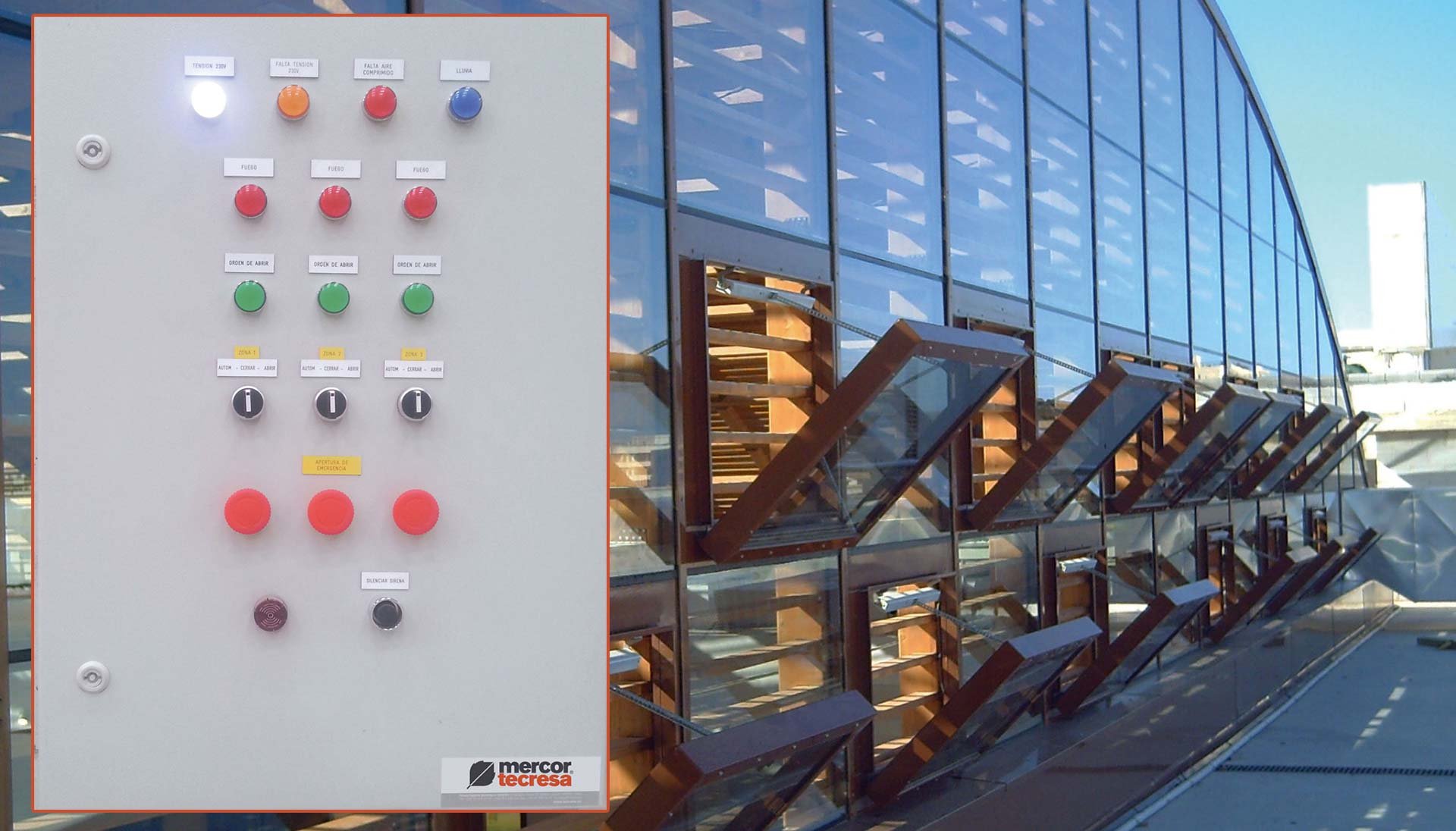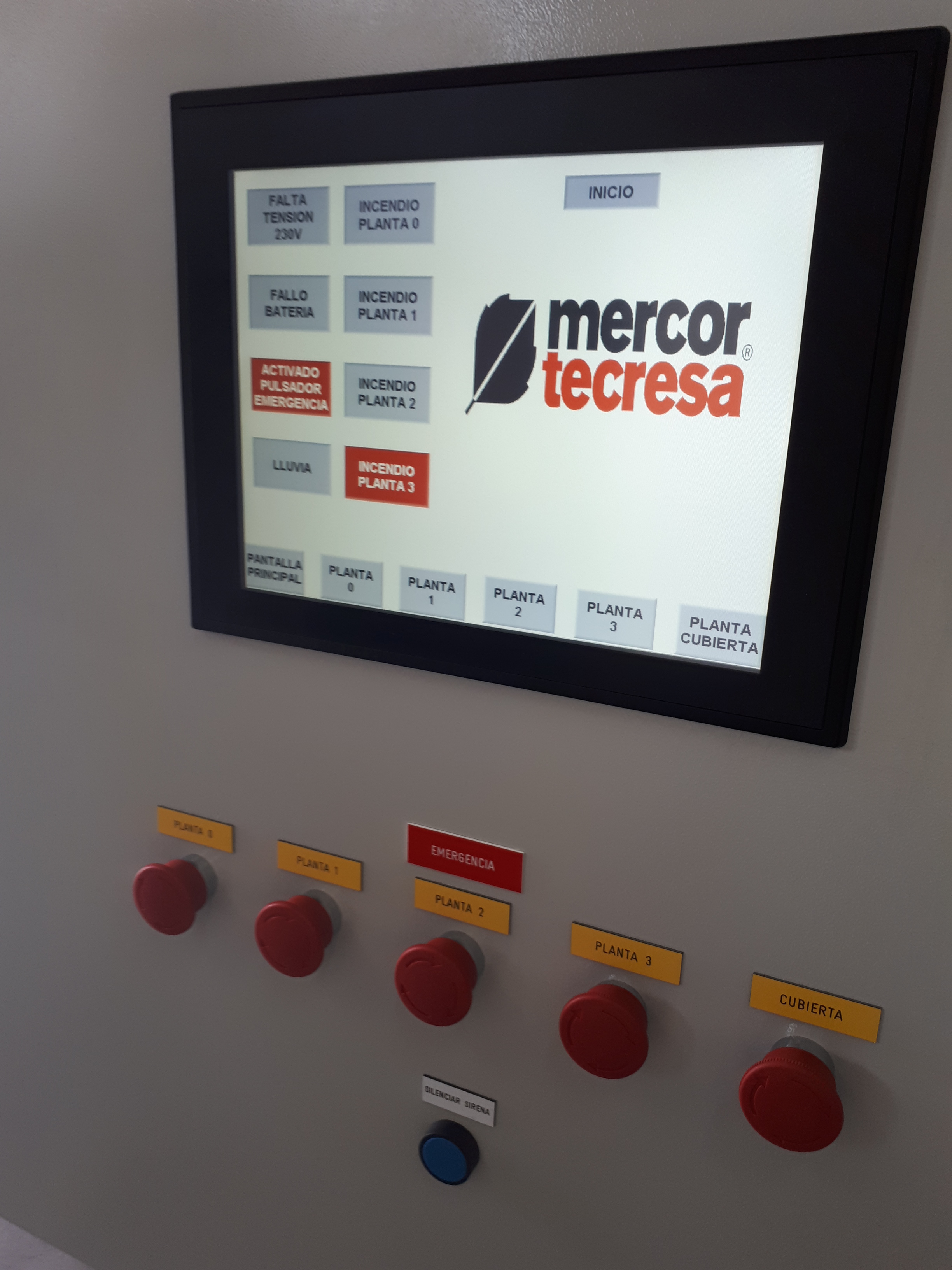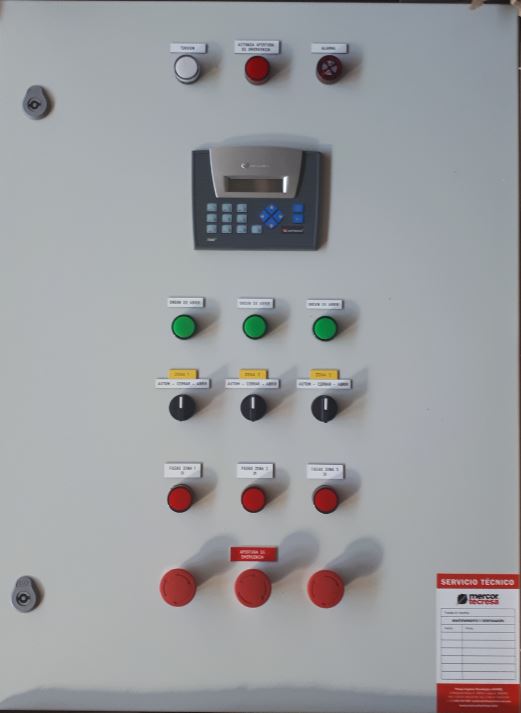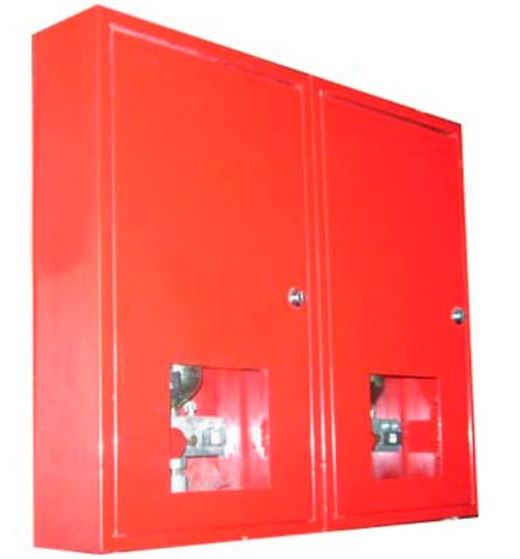
Control Systems of Smoke Exhaust Installation
In this article we look at the different systems that exist to control a smoke evacuation facility and analyze the convenience of each in each situation.
The most used Control Systems are:
- Electrical control system.
- Pneumatic control system.
- CO2 bottles Control System.
- Compressor Control System.
Electrical Control System:
This system consists of a control panel electrically powered by alternating current at 220-volt from the electrical supply of the installation. From this box to the smoke vents the installation goes in direct current to 24-volt by CABLES type AS+. This allows during a possible fire the operativity of these services, as they have been tested to support 842ºC for 90 minutes according to UNE-EN 50200. The opening mechanism of the smoke vents is an electric motor of 24-volt. The control panel has its own integrated UPS. If a power outage in the enclosure happens, the Smoke Evacuation System continues to function properly.
This panel can be connected to a detection signal, so that the smoke vents open automatically in case of fire, which is indicated when designing a Smoke Evacuation System in order to save lives.
Compared to pneumatic opening systems, an electrical system has a higher cost, since the AS+ cable and the electric motor of the smoke vent are more expensive than the copper pipe and a pneumatic piston, respectively. However, for small installations it can be an interesting option, since this control system requires less maintenance, avoiding the legalization of pneumatic installation in Industry.
Pneumatic Control System:
In this type of control system, we have two sections:
a) Pneumatic control system using CO2 bottles: This is the simplest system. It consists of a frame with a mechanical pushbutton in case of emergency and a few bottles of CO2 connected to a valve that drills them in case of fire. The gas then runs through a pipe (usually copper) to the pneumatic piston that opens the outlet allowing the smoke to come out. For connection to fire detection, they usually have a 24-volt solenoid valve that opens the CO2 bottles automatically, so the fire station must bring to the frame a connection with that potential difference.
This system has the advantage of having the lowest economic cost of all three, but it is not suitable if, for example, you intend to use the Smoke Evacuation System for ventilation, since you have to replace the bottles every time you want to open or close the installation. However, it is an interesting option for a heated installation without ventilation.
Recently, our I+D+i department has implemented this CO2 bottles box with the possibility of opening the smoke vents for ventilation, by means of a compressor accompanied also by a weather power plant that commands to close them in case of rain or strong wind. The bottle acts in case of fire, and the compressor connected to it acts for ventilation.
b) Pneumatic Control System by Compressor:
This system typically consists of a control panel powered by alternating current at 220-volt and a compressor powered by alternating current at 220-volt or 380-volt, depending on the power required for the pneumatic circuit. If the place where the Smoke Evacuation System is located has its own pneumatic installation, this compressor can be replaced by an air reserve boiler. Since the cost of a backup boiler is like that of a compressor, the compressor is generally used for the smoke evacuation system. This way, we have the independent pneumatic installations, ensuring there are no failures in the pneumatic installation in fire case.
The control system usually has an emergency press button to be opened by firefighting services, indicators of lack of air pressure or electric current, as well as switches that allow us to open the smoke vents in case we want to ventilate, by opening the corresponding solenoid valves. Usually, this box is connected to a weather station that closes the smoke vents, in case it is ventilating, if it rains or it is very windy. They also have a UPS and the possibility of connecting a detection system.
The frames manufactured by mercor tecresa® can be programed, to integrate systems such as temperature or humidity probes. This program allows us to give a delay to the opening of the smoke vents, or close them in case of fire alarm if they are ventilating, in case the fire protocol requires it, as happens when they go in the company of ESFR type quick discharge sprinklers, for example.


